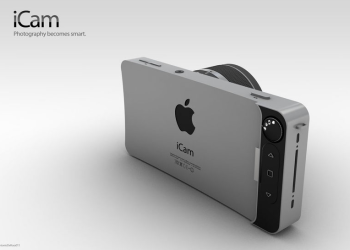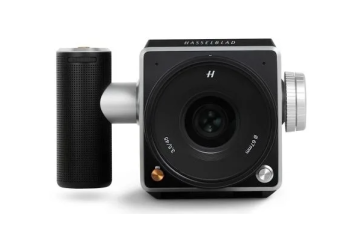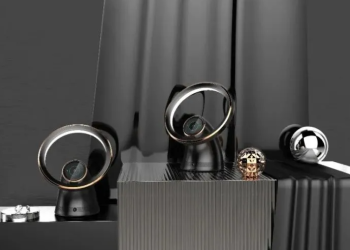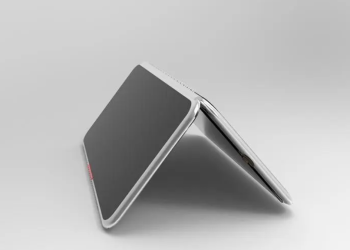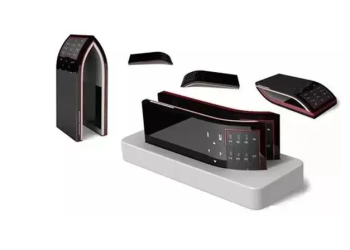Smart lighting has revolutionized the way we illuminate our homes and workplaces. It entails the use of intelligent lighting systems that can be controlled remotely via smartphones or other connected devices. In today’s fast-paced world, where convenience and efficiency are paramount, smart lighting solutions offer a plethora of benefits to users.
Benefits of Smart Lighting
Enhancing Ambiance
Smart lighting allows users to adjust the brightness and color of their lights according to their preferences, thereby creating the perfect ambiance for any occasion. Whether it’s a cozy evening at home or a lively gathering with friends, smart lights can set the mood effortlessly.
Improving Convenience
With smart lighting, gone are the days of fumbling for light switches in the dark. Users can simply use their smartphones or voice commands to control the lights, making it incredibly convenient to manage lighting settings from anywhere in the world.
Boosting Energy Efficiency
One of the most significant advantages of smart lighting is its ability to save energy. By using LED bulbs and incorporating features such as motion sensors and timers, smart lighting systems can significantly reduce energy consumption and lower electricity bills.
Types of Smart Lighting Systems
Wi-Fi-enabled bulbs
These bulbs connect directly to a Wi-Fi network, allowing users to control them using a mobile app or voice commands.
Zigbee and Z-Wave systems
Zigbee and Z-Wave are wireless communication protocols commonly used in smart home devices. They enable interoperability between various smart devices, including lighting fixtures.
Bluetooth-controlled lights
Bluetooth-enabled lights are controlled via a smartphone or tablet using Bluetooth technology. They offer simplicity and ease of use, making them ideal for smaller setups.
Integration with Smart Home Ecosystems
Compatibility with virtual assistants
Smart lighting systems are often compatible with popular virtual assistants like Amazon Alexa, Google Assistant, and Apple HomeKit. This integration allows users to control their lights using voice commands.
Synchronization with other smart devices
Smart lighting can be integrated with other smart devices such as thermostats, security cameras, and motion sensors. This enables users to create customized automation routines and enhance overall home automation capabilities.
Customization and Control Options
Dimming capabilities
Many smart lighting systems offer dimming capabilities, allowing users to adjust the brightness of their lights to create the perfect ambiance for any occasion.
Color temperature adjustments
Some smart bulbs allow users to adjust the color temperature of their lights, ranging from warm yellows to cool blues. This feature can help improve productivity during the day and promote relaxation in the evening.
Scheduling and automation features
Smart lighting systems often come with scheduling and automation features, allowing users to program their lights to turn on and off at specific times or in response to certain events, such as motion detection or sunrise/sunset.
Installation and Setup Process
DIY options
Many smart lighting systems are designed for easy installation and can be set up without the need for professional assistance. DIY enthusiasts can follow step-by-step instructions provided by manufacturers to install and configure their smart lights.
Professional installation services
For those who prefer a hands-off approach, professional installation services are available. Experienced technicians can ensure that smart lighting systems are installed correctly and integrated seamlessly with existing home infrastructure.
Security and Privacy Considerations
Data encryption and protection
To safeguard user data and privacy, reputable smart lighting manufacturers employ robust encryption protocols and security measures. This helps prevent unauthorized access to sensitive information and ensures that user privacy is protected.
User privacy controls
Users have the option to adjust privacy settings and permissions within their smart lighting apps to control the collection and usage of their personal data. This empowers users to make informed decisions about their privacy preferences.
Cost Analysis of Smart Lighting Solutions
Initial investment
While the upfront cost of smart lighting systems may be higher than traditional lighting solutions, the long-term savings in energy costs and maintenance expenses can outweigh the initial investment.
Long-term savings on energy bills
By using energy-efficient LED bulbs and implementing automation features, smart lighting systems can significantly reduce energy consumption and lower electricity bills over time.
Case Studies and Success Stories
Real-life examples of smart lighting implementations
Numerous case studies have demonstrated the effectiveness of smart lighting solutions in various settings, including residential homes, commercial buildings, and outdoor spaces. These success stories highlight the tangible benefits of smart lighting in terms of energy savings, convenience, and user satisfaction.
Challenges and Limitations
Compatibility issues
One of the challenges of smart lighting is compatibility with existing infrastructure and other smart devices. Users may encounter compatibility issues when trying to integrate different brands or types of smart lighting products.
Reliability concerns
While smart lighting technology has improved significantly in recent years, occasional connectivity issues or software glitches may still occur. It’s essential for users to choose reputable brands and products with a proven track record of reliability and performance.
Future Trends in Smart Lighting Technology
Advancements in LED technology
Ongoing advancements in LED technology are driving improvements in smart lighting performance, efficiency, and affordability. Future innovations may include even more energy-efficient bulbs, enhanced color rendering capabilities, and longer lifespans.
Integration with IoT platforms
As the Internet of Things (IoT) continues to evolve, smart lighting systems will become increasingly integrated with other IoT devices and platforms. This integration will enable seamless communication and interoperability between different smart home devices, enhancing overall functionality and user experience.
Environmental Impact
Reduction in carbon footprint
By promoting energy efficiency and reducing electricity consumption, smart lighting solutions play a significant role in mitigating climate change and reducing carbon emissions. This environmental benefit is becoming increasingly important as societies strive to adopt more sustainable practices.
Sustainable lighting practices
In addition to energy efficiency, smart lighting systems can also promote sustainable lighting practices, such as minimizing light pollution and optimizing lighting designs for maximum efficiency and comfort. These practices help preserve natural resources and protect the environment for future generations.
Consumer Awareness and Adoption Rates
Market trends and forecasts
Consumer awareness of smart lighting solutions is on the rise, driven by factors such as increasing demand for energy-efficient products, growing adoption of smart home technology, and advancements in connectivity and automation. Market analysts predict continued growth in the smart lighting market as consumers seek innovative solutions to enhance their homes and lifestyles.
Conclusion
In conclusion, smart lighting solutions offer a myriad of benefits, including enhanced ambiance, improved convenience, and energy efficiency. With various types of smart lighting systems available, consumers have the flexibility to choose the option that best suits their needs and preferences. While there are challenges and considerations to be mindful of, the future of smart lighting looks promising, with continued advancements in technology and increasing consumer adoption rates.

FAQs (Frequently Asked Questions)
- Are smart lighting systems compatible with all types of light fixtures?Smart lighting systems are compatible with most standard light fixtures, including lamps, ceiling lights, and wall sconces. However, compatibility may vary depending on the specific product and manufacturer.
- Can smart lighting systems be controlled remotely?Yes, smart lighting systems can be controlled remotely using smartphones, tablets, or other connected devices. This allows users to adjust their lighting settings from anywhere with an internet connection.
- Are smart lighting systems difficult to install?Many smart lighting systems are designed for easy installation and can be set up without the need for professional assistance. DIY enthusiasts can typically install smart lights using simple tools and step-by-step instructions provided by manufacturers.
- Do smart lighting systems save energy?Yes, smart lighting systems are designed to be energy-efficient, using LED bulbs and incorporating features such as motion sensors and timers to minimize energy consumption. By optimizing lighting usage and reducing wasted energy, smart lighting can help lower electricity bills and reduce environmental impact.
- Are there security risks associated with smart lighting systems?While smart lighting systems employ security measures such as data encryption and user privacy controls, there is always some level of risk associated with internet-connected devices. It’s essential for users to follow best practices for securing their smart home devices, such as regularly updating firmware and using strong, unique passwords.
- Can smart lighting systems be integrated with other smart home devices?Yes, smart lighting systems can be integrated with a wide range of other smart home devices, including thermostats, security cameras, and voice assistants. This integration allows users to create customized automation routines and enhance overall home automation capabilities.
- Do smart lighting systems require a hub or bridge for connectivity?Some smart lighting systems require a hub or bridge to facilitate communication between the lights and other connected devices. However, there are also standalone smart lighting products that connect directly to Wi-Fi or Bluetooth networks, eliminating the need for additional hardware.
- Are smart lighting systems suitable for outdoor use?Yes, there are smart lighting products specifically designed for outdoor use, including floodlights, path lights, and garden lights. These products are typically weatherproof and resistant to elements such as rain, snow, and UV radiation, making them suitable for use in outdoor environments.



![Top 10 Smart Home Devices of [Current Year]: Reviews and Comparisons](https://digital-electron.com/wp-content/uploads/2024/02/image-42-350x250.png)



